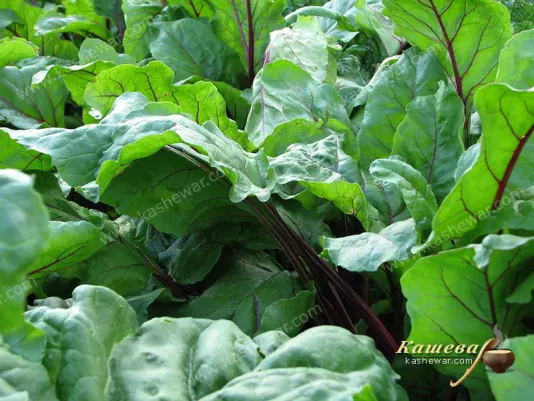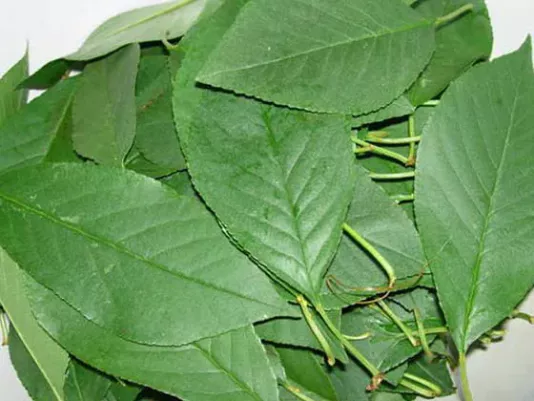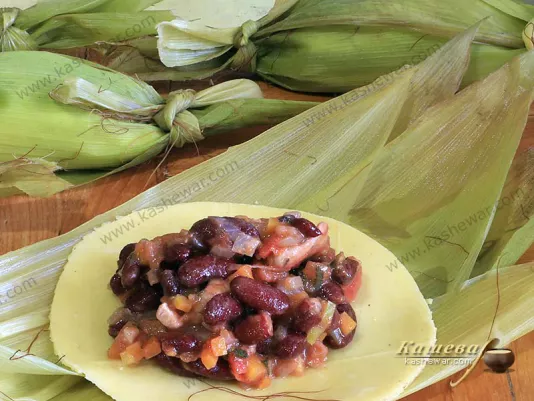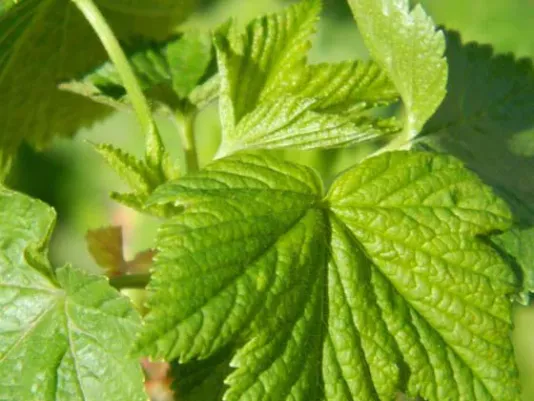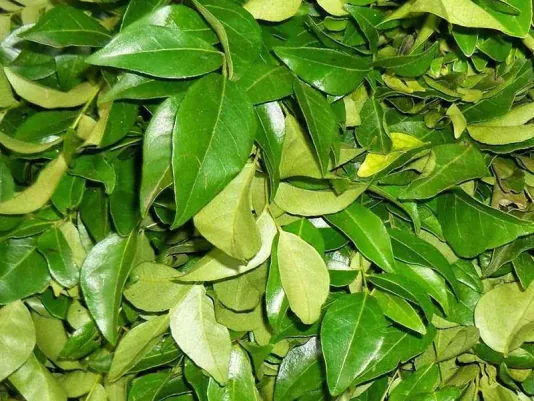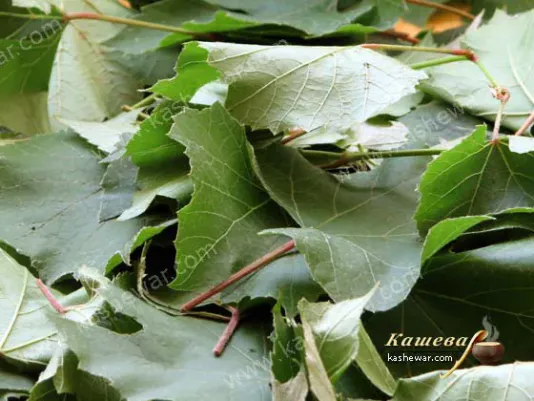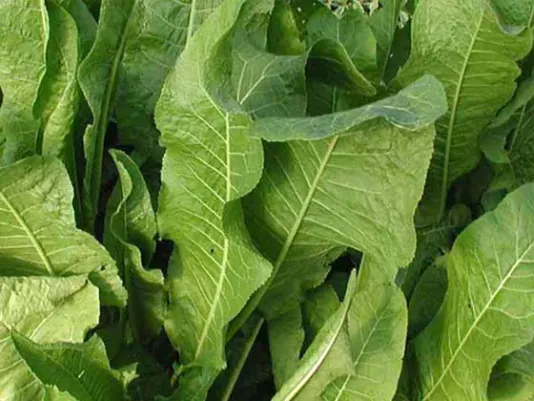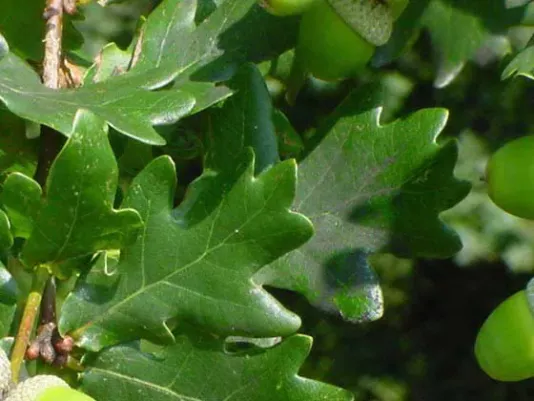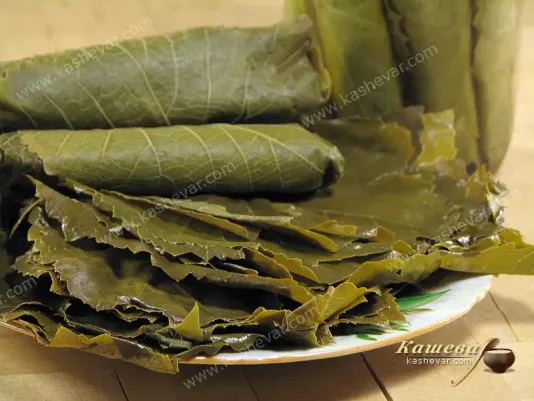Leaves
Leaves in my cooking always have a special meaning, as they not only decorate dishes but also actively participate in preparation, creating a unique taste. I often use grape leaves to make dolma, and every time it is a special process: tender leaves become a natural wrapper for rice, meat, and spices, giving the dish a distinctive aroma. Currant and cherry leaves are indispensable for me in preservation – they help cucumbers stay crunchy while enriching the brine with pleasant notes. I always put horseradish leaves in jars with pickled vegetables because they reliably preserve their structure and add piquancy. I even sometimes use corn leaves as a natural wrap for grilled or baked dishes, and the result is always original and appetizing. For me, all these types of leaves are not just auxiliary ingredients but important components of cooking that open new possibilities and allow me to create dishes with authentic taste and aroma.
Different Types of Leaves
Grape Leaves in Traditional Dishes
Grape leaves have always been a special ingredient for me because they combine tenderness and strength. I most often use them to make dolma, and each time the process gives me pleasure. I choose young grape leaves because they are soft and elastic, allowing them to wrap the filling of rice, meat, and spices well. In the finished dish, the leaves add a light grape aroma and pleasant acidity, which make dolma recognizable and unique. If I have a lot of leaves left, I always pickle or freeze them so I can prepare the dish in winter. For me, grape leaves are also a reminder of summer, of vineyards, and of the sun that fills them with aroma. Sometimes I even use them in casseroles or for baking fish to give it a special taste. These leaves have become a true symbol of culinary culture for me, as they not only help create delicious dishes but also connect them with ancient traditions.
Currant and Cherry Leaves in Preservation
Currant and cherry leaves I use primarily for salting and pickling vegetables, and they always work flawlessly. For me, they are a kind of guarantee that cucumbers will remain crunchy and keep their proper taste even after long storage. Currant leaves give the brine a gentle berry aroma, while cherry leaves add a slight astringency that makes vegetables even more interesting in taste. I always put a few leaves in jars during preservation and have long been convinced that without them the result would be completely different. They help retain the natural color and shape of vegetables while enriching the brine with natural substances that act as a preservative. In my kitchen, these leaves have become an essential part of summer and autumn preparations when I fill the pantry with jars of crunchy cucumbers. For me, they symbolize not only benefits but also traditions, as this is exactly how our grandmothers prepared food, and I always repeat this experience with warmth and confidence in the result.
Horseradish Leaves for Firmness and Flavor
Horseradish leaves are, for me, a real secret in preservation that ensures vegetables retain their firmness and structure. I always add a few leaves to jars with cucumbers or tomatoes, and thanks to this, they remain crunchy even after several months. In addition, horseradish leaves give the brine a light bitterness and spiciness, which make the taste of vegetables deeper and more expressive. I have found that without this ingredient, preservation turns out less successful, so I always prepare leaves for winter. I also like that they naturally enhance the aroma of other spices – garlic, pepper, or dill – creating a harmonious bouquet. In some cases, I even use horseradish leaves when baking meat to add light spicy notes. For me, this ingredient is a symbol of reliability in cooking, as it not only helps preserve product quality but also gives them a special character.
Corn Leaves in Cooking
Corn leaves were a discovery for me because they can be used not only as waste after cleaning cobs but also as a useful ingredient. I like to use them as a natural wrap for baking dishes: you can wrap fish, vegetables, or even dough for tamales, and the dish acquires a special aroma and tender texture. These leaves withstand high temperatures while retaining moisture inside, so the food comes out juicy and rich. Sometimes I dry corn leaves and use them to flavor broths or drinks, as they add light sweet notes. For me, they symbolize resourcefulness in the kitchen, when simple things can be turned into something interesting and unusual. I have found that even such an inconspicuous ingredient can become a real find for cooking and give dishes a unique character.
Benefits and Traditions of Using Leaves
For me, leaves in cooking have always been something more than just an additive – they help create a special mood and give dishes uniqueness. I have found that each type of leaf has its own role: grape leaves bring tenderness and aroma to dolma, currant and cherry leaves preserve the crunch of vegetables in pickling, horseradish leaves ensure firmness and add piquancy, while corn leaves make an excellent natural wrap for baking. Even when pickled, grape leaves retain all their properties, and I always keep them on hand for festive dishes. I like to experiment with different types of leaves, creating new combinations and adding them to soups, sauces, or even drinks. They not only enrich the taste but also make the kitchen more diverse and interesting. For me, leaves are a symbol of traditions and ingenuity, as they show how in cooking you can use the gifts of nature to the fullest, creating dishes that stay in memory for a long time.
